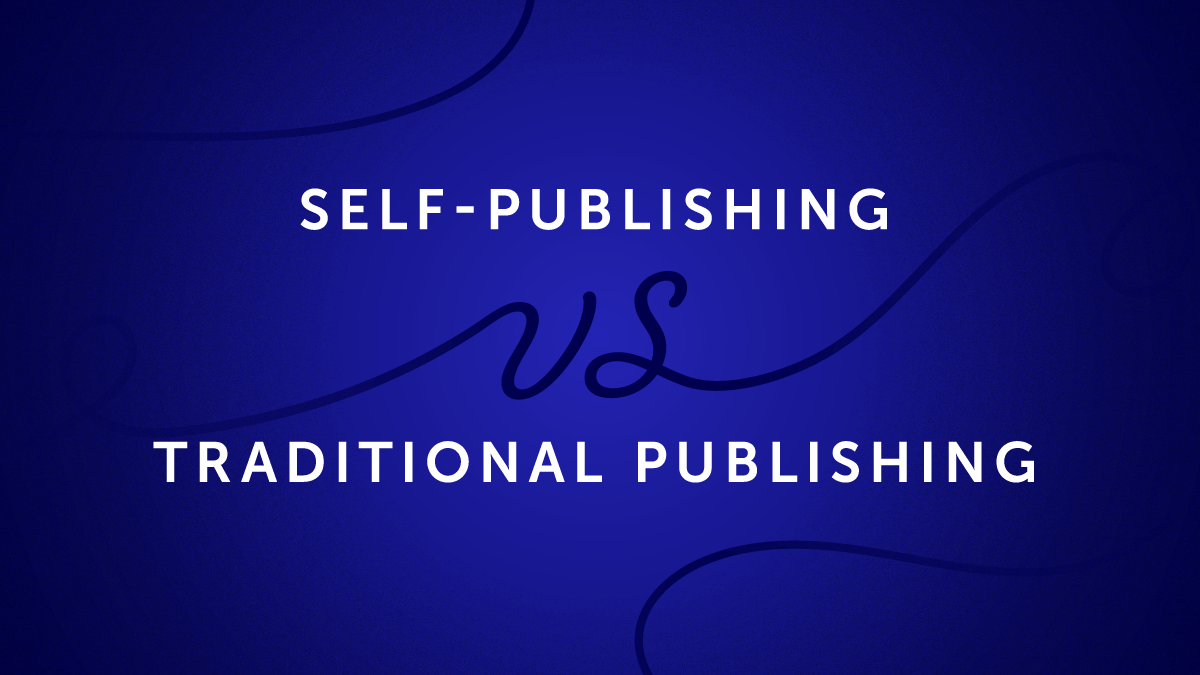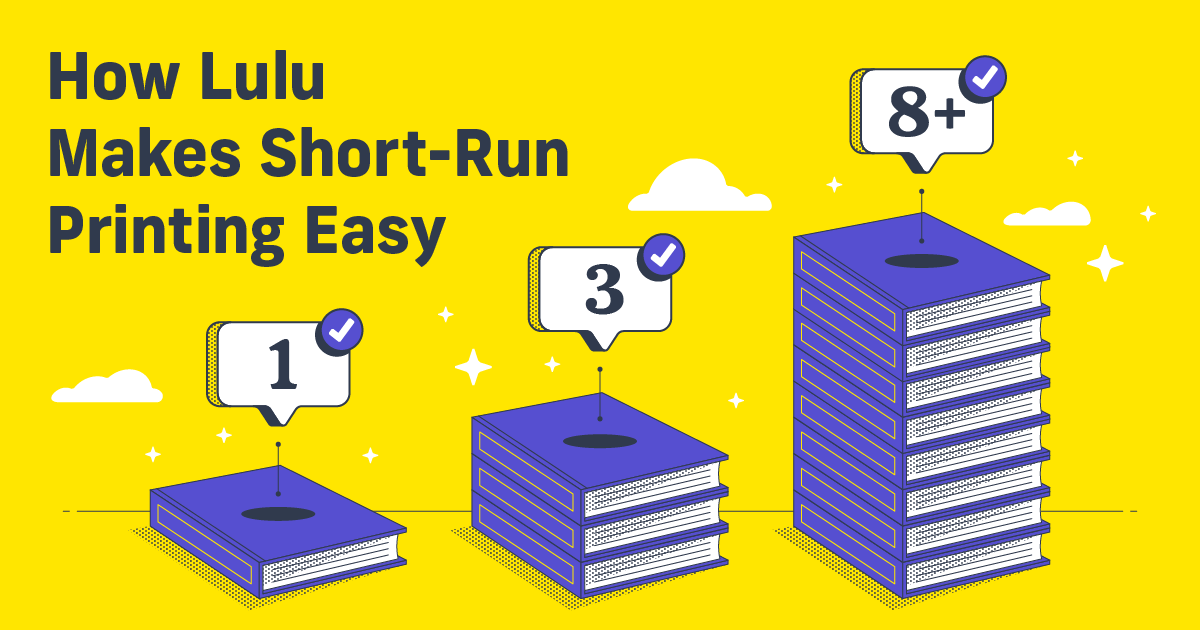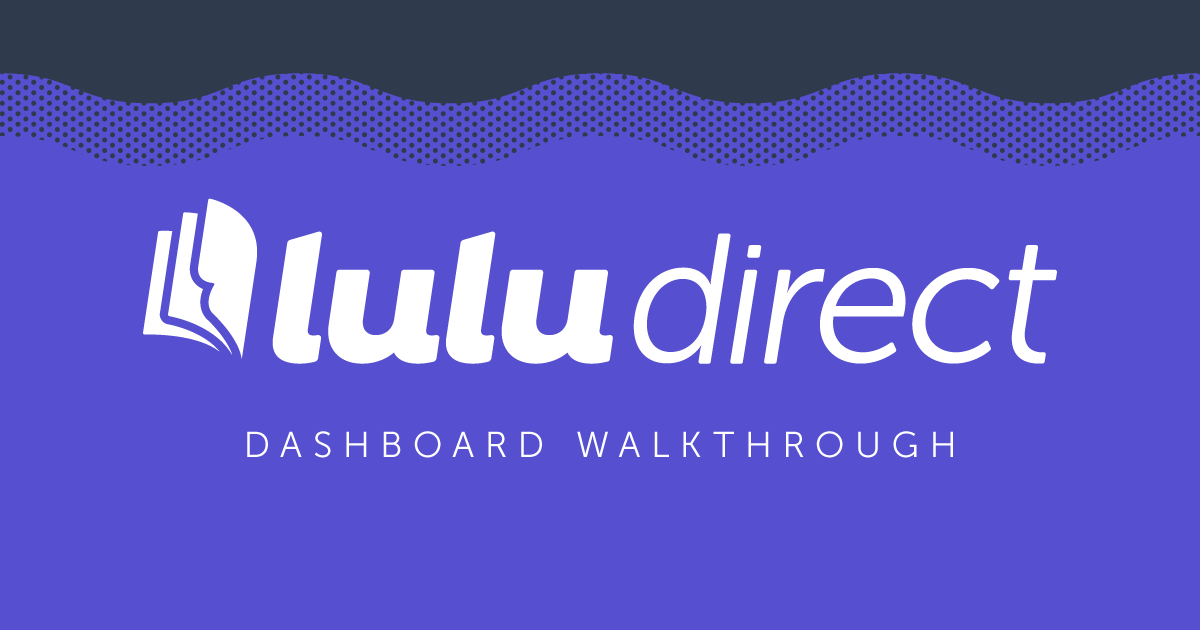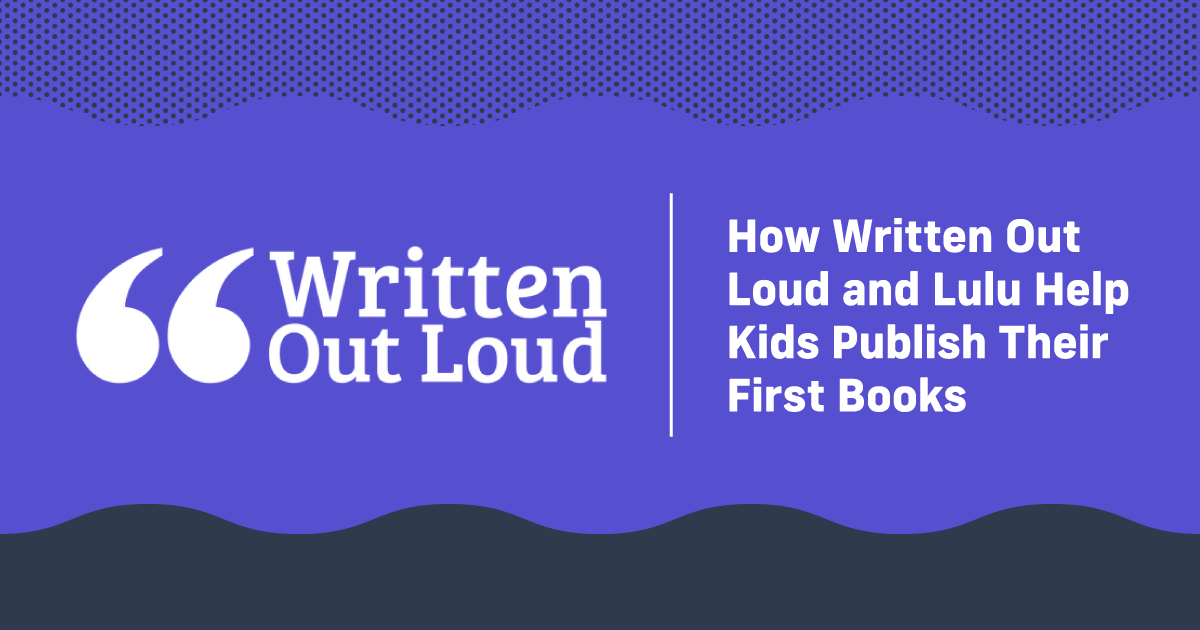The Publishing Journey: Traditional Publishing vs. Self-Publishing
There reaches a point in every author’s publishing journey where they have to choose which way to move forward. In one direction, you have traditional publishing, with an agent and a book deal and a seven-figure advance with movie rights already optioned (lol). In the other direction, you have the DIY self-publishing route.
There are pros and cons to both paths and which path will work best for you can vary dramatically from person to person or business to business. We’ve taken a look at the differences between self-publishing and traditional publishing\ in the past and at how to know which publishing path is right for you, but what exactly are these paths? If you’re not familiar with traditional publishing, self-publishing, or either of them, then the process that takes a story from Word Doc to bound and printed book might be one big question mark for you. So let’s take a look at how a book gets published!
Disclaimer: While I’ve worked in both traditional publishing and self-publishing, my experiences with both journeys are limited, not universal. The process might vary from publisher to publisher, for example, and not every self-publishing journey looks the same. But as a broad overview of both options, I’ll do my best to hit all the key stops along the way.
Traditional Publishing vs. Self-Publishing
To talk about the differences between traditional publishing and self-publishing, we first have to understand the difference between the two.
Traditional publishing is what most people think of when they think of someone writing and publishing a book. An editor at a publishing house like Penguin Random House, Harper Collins, etc. bought a manuscript from an author and a team of people polished it, packaged it, convinced retailers to stock it and readers to buy it, and profited off it.
Self-publishing, of course, is what we do! It relies on the author or creator to do the bulk of the polishing, packaging, marketing, and selling (though not necessarily alone!). We’ve talked quite a bit about what self-publishing is, so rather than rehashing that again here, I think the best way to understand your publishing journey is to highlight the two major distinctions between your publishing options.
1. Traditional Publishing Is Heavily Guarded by Gatekeepers
We’ll talk more about the specifics of what this means in a minute, and there’s already a great blog post about understanding the publishing gatekeepers, but it is probably the biggest distinction between traditional publishing and self-publishing—traditional publishing has people and processes built into nearly every single step of the “publishing journey” that is explicitly set up to restrict the publication of books.
Self-publishing, on the other hand, has no such restrictions. This is not to say that there aren’t gatekeepers to the self-publishing industry, there are. But they don’t show up until after your book is already published, whereas traditional publishing can shut your book down before it’s even been written, let alone published.
2. Self-Publishing Is Heavily Controlled by the Author
Self-publishing, depending on what publisher you work with, is either mostly or entirely DIY – the author themselves is responsible for editing, formatting, designing, marketing, and selling their book (or, of course, hiring people to do those things for them). Traditionally published authors, on the other hand, relinquish a lot of control to their publishers, putting their books into the hands of a team of professionals who will edit, polish, package, market, and publish your book.
For some people, the DIY aspect of self-publishing is exactly what makes it attractive. They prefer to have total control over their book design, their marketing and sales strategies, their branding, etc. For others, the DIY part is overwhelming and they would rather have the professional help that comes with a traditional publishing book deal.
Another disclaimer: I am absolutely in no way shape or form trying to sell you on one path over the other. I believe strongly in the merits of both traditional and self-publishing, and more importantly, I believe that publishing a book—regardless of which way you do it—isn’t a one-size-fits-all experience.
For some authors and entrepreneurs, self-publishing is a much better fit than traditional publishing, and for others, traditional publishing makes more sense. If you’re not sure which journey is the best option for you, check out this Lulu University episode (but also finish reading this blog post first):
Okay, so now that we know what the key distinctions between traditional publishing and self-publishing are, how do they differ along the path from Word Doc to published book? Let’s take a look!
The Publishing Journey: From Word Doc to Finished Book
For the purpose of this blog post, we’re going to assume you’ve already written your book in its entirety. In some instances, specifically with nonfiction books, an author can get a book deal with a traditional publisher based entirely on a proposal, but let’s not overcomplicate this. You’ve written a book and you’re ready for someone other than you and your friends to read it. Now what?
Selling Your Book
This particular step is all about that “traditional publishing is heavily guarded by gatekeepers” point from earlier – in fact, so much so that the “selling your book” step doesn’t exist in self-publishing at all. Selling your book, in this context, doesn’t mean getting individual customers to purchase copies of your finished book. What we’re talking about right now is getting a contract with a traditional publishing company for them to publish your book.
Spoiler alert: it’s not easy.
Most traditional publishing companies these days do not accept unagented submissions. Some do, especially the smaller or more niche ones, but the days of submitting an unsolicited manuscript to an editor’s slush pile are coming to an end.
This means that the first thing you need to do is find an agent. This means you need a query letter – essentially an elevator pitch about your book (or your book proposal, if you’re pitching a nonfiction project), and about you, and about why this agent should take a chance on said book and you.
Once you have signed a contract with an agent—and probably done a round or two of edits on your manuscript—your agent will shop your book around to various editors at various publishing houses, hoping to find the perfect home for you and your work. If you’re lucky—talented, yes, but also lucky—your agent will find you an editor who likes your book enough that they want to buy it.
“Want to buy it” is a pretty important element here, because even if an editor is completely head-over-heels in love with a manuscript or proposal, that doesn’t mean they’ll be able to acquire it. Editors need permission from their internal sales department before making an offer on any new books, and there are a whole bunch of different factors that are considered before a decision is made. Sometimes a publisher will say unilaterally “We’ve acquired too many historical romance novels recently, no new historical romances until further notice.”
Sometimes a publisher will be unwilling to take a chance on a debut author with little to no built-in audience – yes, not being on social media can genuinely be the reason your book doesn’t get acquired by a publisher. Really. And yes, it’s an ugly and unfortunate reality that sometimes books get rejected because of the author’s (and, presumptively, the characters’) gender identity, sexual orientation, or race.
So there you have it, the first major distinction between traditional publishing and self-publishing. To have your book traditionally published, you have to get through at least three distinct rounds of gatekeepers before your book gets added to a publication schedule and a team of professionals gets to work on it. Indie authors, you can skip this step and go right on ahead to working on that manuscript with or without your team of pros.

Your Free Lulu Account
Create a Lulu Account today to print and publish your book for readers all around the world
Publishing Your Book and Assembling Your Dream Team
Publishing a book takes a village. Seriously, whether you’re going the traditional publishing route or the self-publishing route, it’s not a journey anyone should take alone. So who, exactly, helps to publish a book at a traditional publishing company? And how does a self-published author replicate that team of professionals?
The Publishing Journey – From Word Doc to Finished Book
Reminder disclaimer that this is based on just one person’s (AKA my) experience in the traditional publishing industry. These roles might look different at different publishers, with different people responsible for working on certain parts of the book. But this should be close enough to cover all the bases, at least.
1. Editorial Team
We recently took an in-depth look at different types of editors—developmental editors, line editors, copyeditors, specifically—that will focus on different elements of your fiction or nonfiction book. Yes, those editors all work at publishing companies too. The editor most authors will work with directly will be their developmental editor, but your book will likely also be read by a line editor, possibly a sensitivity reader, and definitely a copyeditor.
Also a frequently overlooked but essential member of your editorial team – editorial assistants. At many publishing companies (not all, but plenty of them), the editorial assistants will play a big role in your book’s production. They’ll assist your editor, of course, but may also be responsible for things like identifying your book’s metadata, finding comp titles, drafting your cover copy, and probably a hundred other little details that many of us don’t even think about.
2. Production Team
While your editorial team works to make sure your content sounds good, a production team is going to make sure your book looks good. A cover designer—either in-house or contracted out—will, you guessed it, design your cover. A graphic designer may also work on any interior assets you have – if you’re writing nonfiction with a lot of charts and diagrams and photos, or maybe if you’re writing fantasy with a map of your fictional world, or even details like the chapter header art.
You’ll also have the production team formatting your book for you. Have you ever noticed that the text in a book goes fully from margin to margin? Words will be cut in half between two lines if that’s what it takes to make the paragraph edges even, or the spacing will be manipulated to make everything fit. It’s someone’s job to design those pages to look like that! Everything from line and paragraph breaks down to the page numbers and header details, the production team designs it all.
3. Marketing & Publicity Team(s)
One mistake that a lot of authors make—both self-published and traditionally published authors—is the assumption that your book needs to be published before you can start promoting it. In reality, marketing and publicity efforts start way before a book’s publication date. The publishing timeline can vary quite a bit between publishing houses and genres, but in my experience marketing and publicity efforts started six to nine months before a book was published.
The individual responsibilities of a marketing & publicity team will vary based on factors like the size of the publisher, the total budget, and the book’s genre. But the purpose remains the same – promoting your book to the public. Your publicist will pitch your book for earned exposure – reviews from both major and minor review outlets or individuals, features from influencers, inclusion in articles about upcoming book releases, etc.
This team will also be responsible for things like planning your in-house social media campaign, arranging pre-launch giveaways or preorder campaign incentives, and—when applicable—book tours or speaking events. The marketing team will also organize paid promotional opportunities like sponsored branding on sites or in newsletters, paid SEO campaigns, book features on major retailer sites, etc. Whatever they can do to get your book in front of an audience.
4. Sales Team
While the marketing and publicity teams are working on promoting your book to individual readers—or to outlets that will promote your book to individual readers—the sales team is responsible for promoting your book to retailers and libraries so that it’s accessible to those individual readers. They’ll pitch your book to brick-and-mortar bookstores like Barnes & Noble and notable indies, big box stores like Target and Walmart, and also to libraries and schools. It’s their job to convince these retailers that they should invest money (and valuable shelf or display space) into stocking your book, preferably in significant quantities or in prominent displays.
You know when you walk into Barnes & Noble and you see a display on the end of a row of shelves highlighting specific books? Sometimes the booksellers get to choose what goes there (and believe me, it’s super fun to put those displays together). But most of the time that isn’t random. Somewhere out there (probably in New York City) is a sales rep who arranged for that display to happen.
Like I said—it takes a village. There’s definitely a chance that you’re sitting there right now thinking “All those people for one book? Do I need all those people if I want to self-publish my book? How am I even supposed to find them, let alone pay for them??” Don’t! There’s a publishing dream team out there for you, but it’s probably not the size of a small company. Or a small army.

Sell Your Book, Your Way
Sell books on your Wix, Shopify, or WooCommerce website with Lulu Direct.
Or use our Order Import tool for your next book launch.
Who Works on a Book in Self-Publishing?
We’ve already established that the second big distinction between traditional publishing and self-publishing is that self-publishing is much more do-it-yourself. But don’t mistake that to mean that you, the self-published author, should actually do all of it by yourself. Of course, it’s possible, and I’m sure that there are Lulu authors out there who have done a successful job of single-handedly publishing their books, but we still highly, strongly, and empathically encourage you to get some help from publishing pros when you can.
I’m not going to go into detail about how to self-publish your book—we’ve already done an entire post breaking down the editing, formatting, and publishing process. In fact, this post was originally part of that one. If you want to dive into the step-by-step of what to do once you’ve finished writing your book, check out How to Get Started Publishing.
Chances are you can handle at least a few of these things on your own. Maybe you already have your own business, brand, or audience, so you can handle the marketing and publicity stuff. Maybe you have professional or personal experience with graphic design and you feel confident handling the formatting and cover design part of your production.
It’s also definitely worth noting that there isn’t really a self-publishing equivalent to a “sales team.” If you choose to self-publish using global distribution your book will be automatically distributed to online retailers, but very few brick-and-mortar retailers will stock copies of your book, and if they do it’s most likely that you will make those arrangements on a one-on-one basis. Print-on-demand, especially in a post-COVID world, is all about ecommerce and direct-to-consumer bookselling, not physical bookselling.
Once you’ve established what parts of the self-publishing process you can manage on your own, consider how you can get the other parts taken care of. Check out our network of publishing professionals for everything from full-service production to à la carte services, and our Author Toolkit for software and tools. How to Get Started Publishing rounds up most of our resources for hiring professional editors and designers. And you can always watch this Lulu University episode on How to Build Your Publishing Dream Team for more suggestions!
How Traditional Publishing and Self-Publishing Overlap
So far we’ve talked about the major differences between traditional publishing and self-publishing, but they have plenty of significant overlap too. Writing your book, for starters, won’t be any different. The steps that come after that are pretty similar too, other than skipping the “sell your book” step for self-publishing. Both journeys will (or should) start with a few rounds of edits, including interior formatting and cover design, and will end with you holding a beautiful printed and bound manifestation of all your hard work.
But the biggest way that traditional publishing and self-publishing overlap, in my experience, is the marketing and publicity part. Many authors seem (somewhat mistakenly) to assume that being traditionally published means you’re guaranteed a built-in audience of loyal buyers and readers.
Let me ask you this—have you ever said to yourself “Oh yes, I love everything Penguin Random House publishes, I buy every book they release.” Do you even know who publishes your favorite author? Kudos to you if you do, but most people don’t. Publishers don’t have fans, authors have fans. And regardless of whether you are traditionally published or self-published, it’s up to you to find your fans and grow your author network.
Yes, traditional publishing has tools and advantages to help you with that—bigger marketing budgets, professional connections with reviewers and outlets, social media followers, other authors to talk you up, etc.—but all of that will only get you so far. A huge amount of the promotional work will still fall on the author. And hey, traditional publishing might have some advantages to help new authors with their promotional plans, but self-published authors aren’t totally without.
I’ve written other posts before on topics like How to Pitch Your Book or how to represent your author brand on social media. We have a whole Lulu University playlist of videos about promoting your book. There are also amazing communities out there that are devoted to supporting independent authors specifically—check out the Alliance of Independent Authors and Independent Book Publishers Association (IBPA) to start! I meant it when I said publishing isn’t a journey you should take alone.
Ultimately, only you can know which publishing path is right for you. I encourage you to do your research and explore your options. It’s also important to remember that you are not forever and indefinitely locked into whichever path you choose—I’ve seen authors get traditionally published and then choose to move forward independently, and I’ve seen indie authors get picked up by publishers.
In the end, regardless of which path you choose, you’ve done something incredible. You’ve written and published a book. A whole book. Sure, we like to say that everyone can publish a book (and they can), but not everyone does. You did. That’s amazing.




